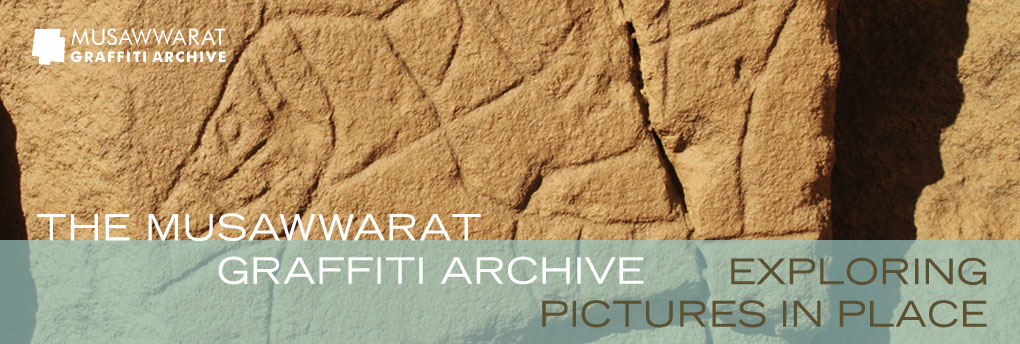Documentation Strategy
The comprehensive documentation strategy developed for the Musawwarat Graffiti Project since its first field season in 2008 aims at the detailed graphic and descriptive documentation of the graffiti in their exact location, taking into account that their placement may contain important information on the significance of the graffiti, and on contexts and motivations of graffiti making. Many of the graffiti were placed on the sandstone blocks in a manner which suggests that their makers respected the block. This indicates that the blocks themselves were visible and not obscured by plaster when the graffiti were made.
As the individual block often appears to have served as a ‘canvas’, the project’s documentation strategy takes the individual block (surface) as a point of departure, instead of studying individual graffiti in isolation from their sandstone block support. Various 'traditional' as well as various digital capture methods have been used in documenting the Musawwarat graffiti, including sketching and drawing, direct tracing, digital and computational photography, 3D-scanning as well as mapping and descriptive recording. All data are entered into a Filemaker database especially developed for the Musawwarat Graffiti Project and are eventually made publicly available via the ‘Graffiti in Place Database’ of the Musawwarat Graffiti Archive.
Text: Cornelia Kleinitz (2014)






